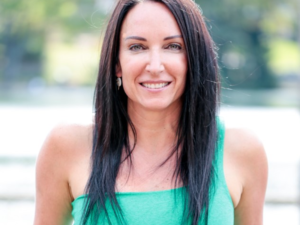The Koshas
by Nicole Zornitzer
Often one comes to a yoga class for the physical aspects—to stretch, sweat or become more flexible. However, what is not commonly discussed are the five koshas (sheaths or layers) of the human being. An awareness of these subtle energies within our bodies can bring any physical yoga practice beyond the mat. When I was in training 15 years ago, this concept resonated with me so much that I incorporated an awareness of these concepts in every asana practice.
For a body to be whole and healthy, it is necessary for the five koshas to be in harmony with one another. When the body is in disharmony dis-ease occurs; therefore, I believe it is essential to introduce and experience each kosha individually and collectively in a yoga program. As B.K.S. Iyengar discusses in Light on Life, true health requires not only effective functioning of the physical exterior of our being, but also the vitality, strength and sensitivity of the subtle levels within.
Annamayakosha
The outermost layer is annamayakosha (physical body). In yoga asana class, the various shapes the body is put into directly affect the physical body. It is important for the physical body to be strong yet flexible, all the while creating open channels of energy to support our skeletal system, nervous system and internal organs.
Pranamayakosha
The second layer is pranamayakosha (energy body). This is directly related to breath. An awareness of each inhalation and each exhalation and the breath’s power to directly affect our physical body is essential when practicing yoga. Our breathing is just as important as our movement, and all will experience the maximum benefit of their yoga practice by manipulating the breath properly.
Manomayakosha
The third layer is manomayakosha (mind). Learn to withdraw the senses and allow thoughts to come and go without forming attachment. In a mindful manner, acknowledge a thought but then release that thought and remain centered in yoga practice allows for the opportunity to “just be”.
Vijnanamayakosha
The fourth layer is vijnanamayakosha (wisdom self; third eye). This involves focused awareness on the space between the eyebrows to become the witness to the physical body and the mind. As one separates the ego from the self, one finds the ability to become the witness to all that is. Here there is no judgment; we are cultivating kindness towards our bodies and all that exists.
Anandamayakosha
The final layer is anandamayakosha (bliss body). This is the most difficult to explain or achieve, as it is absolute peace. It is important to keep expectations reasonable, so start with becoming aware of the smallest of moments where bliss may occur. The ultimate goal of yoga is to find this comfortable “seat” and rest, truly rest, and be at ease.
The definition of yoga is the yolking together, or union, of mind, body and spirit. The five koshas of the body are the foundation to creating this harmony of self.
Nicole Zornitzer, ERYT 1000, yoga therapist, founder of Niyama Yoga & Wellness Studio in Randolph, New Jersey. NiyamaYogaStudio.com.




